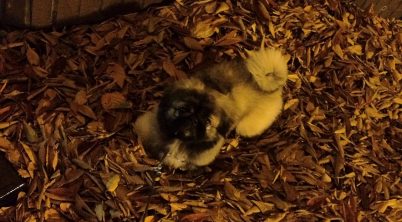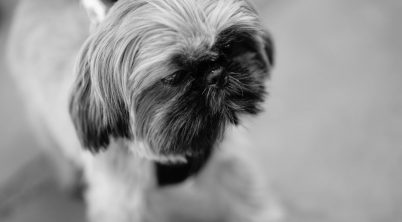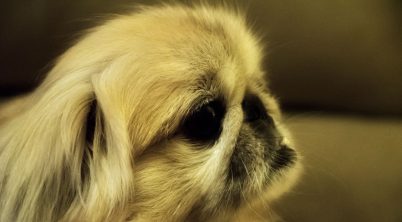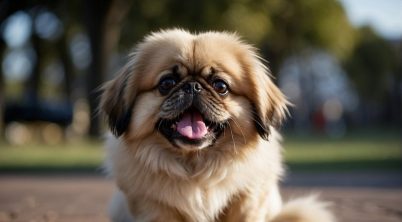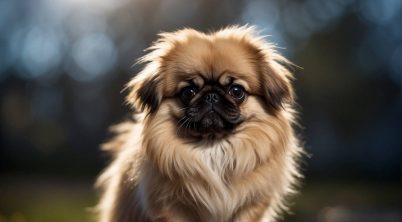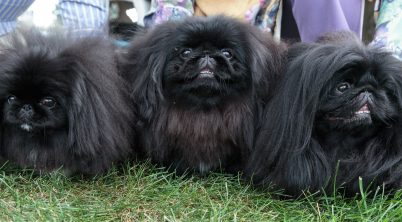The Pekingese dog breed is an ancient and fascinating companion, originating from China where they were once cherished by Chinese imperial families. With their distinctive appearance, regal demeanor, and rich history, these small, charming dogs have captured the hearts of many pet enthusiasts worldwide.
Pekingese dogs are known for their loyalty and affection, making them wonderful house pets. They were often referred to as “foo dogs” due to their resemblance to the mythical Chinese guardian lion. Boasting unique characteristics such as their brachycephalic (squashed) face, short bowed legs, and a luxurious long coat, these dogs have an unmistakable look that sets them apart from other breeds.
In this article, we will be exploring various fun facts about the Pekingese breed, delving into their history, traits, and personality. By gaining a deeper understanding of these lion-hearted dogs, readers will undoubtedly develop an appreciation for their quirks and charm.
Origin and History
The Pekingese, also known as the “Lion Dog,” has a rich history dating back thousands of years in ancient China. These small, regal dogs were revered as sacred beings and primarily kept as palace dogs by members of the imperial family. Their striking appearance was intentionally bred to resemble the Chinese guardian lion or “Foo Dog,” a mythical creature signifying protection, strength, and nobility.
In the days of the Chinese emperors, Pekingese were known as “sleeve dogs” due to their small size, which allowed them to be carried in the oversized sleeves of the nobility’s garments. This not only showcased their status as prized possessions, but also served as a practical form of entertainment and companionship for their owners.
The breed first gained international recognition when English forces looted the Imperial Palace in Beijing (formerly known as Peking) in 1860. Among the spoils were a number of Pekingese dogs, which were subsequently returned to England and presented to Queen Victoria. The arrival and subsequent popularization in the West changed the breed’s status from palace-exclusive, with Pekingese eventually becoming a well-known and beloved toy breed across the globe. However, their history remains deeply rooted in Chinese culture, and their faithful, courageous nature is a testament to their storied past as protectors and companions of royalty.
Physical Appearance
The Pekingese is a small and compact dog breed, typically measuring around 7-9 inches in height. Males and females both tend to weigh between 7-12 pounds, making them an ideal size for a house pet or a close companion.
The Pekingese stands out for its coat, featuring a distinctive mane around the neck that gives it a “lion-like” appearance. This fluffy mane can come in a range of colors, including white, fawn, or cream, and often features a characteristic black mask around the eyes and muzzle. The fur is typically long and can form a thick, luxurious coat, providing an elegant and regal appearance befitting its royal ancestry.
Apart from its coat, the Pekingese’s most notable physical features are its broad, black nose and prominent, round eyes. Set wide apart, these large eyes are accentuated by black eye rims, which draw attention and add charm to the breed’s overall appearance. The ears are heart-shaped and lie flat against the head, located on the front corners of the top of the skull.
To sum up, the Pekingese has a unique and unmistakable appearance due to its small size, fluffy mane, and striking facial features. These physical traits make it stand out among other breeds and contribute to its enduring popularity as a cherished companion.
Temperament and Personality
The Pekingese is a small dog breed with a distinctive temperament and personality. They are known to be loyal and affectionate, forming close bonds with their owners. This loyalty can sometimes make them wary of strangers, but it also means they are great companions for those seeking a dedicated and loving pet. The Pekingese is considered to be alert and attentive, which makes them good watchdogs despite their small size.
These dogs are also known for their independent nature. They can be quite stubborn at times and may not always be receptive to training. However, with patience and consistency, the Pekingese can learn to follow basic commands. Their independence also means they can be content with spending time alone, making them suitable for busy households.
In terms of personality, the Pekingese is a courageous breed. They are not easily intimidated and possess a surprising amount of self-confidence for such a small dog. These qualities can make the Pekingese appear more assertive or even regal in their demeanor. Some may describe the breed as bold and self-assured, which can be an attractive trait for potential owners.
While the Pekingese’s long, luxurious coat may initially appear hypoallergenic, it is essential for potential owners to know that they are not a hypoallergenic breed. Regular grooming is necessary to maintain their coat and minimize shedding, which can help alleviate some allergy symptoms.
Throughout their life, which typically spans 12 to 14 years, the Pekingese’s temperament and personality remain fairly consistent. Their loyalty, courage, and independence are characteristics that endear them to their owners and make them a popular choice among dog enthusiasts who prefer a small breed with a unique personality.
Training and Exercise
Pekingese dogs are known for their loyalty, affection, and strong bond with their owners. Training a Pekingese can be fun and engaging with the right approach. It is essential to use positive reinforcement techniques when training these dogs, as they respond well to praise and rewards.
These small dogs have a distinctive rolling gait and require exercise to maintain their health. However, their exercise needs are relatively low compared to other breeds. Regular walks and playtime in a secure, enclosed yard will help keep your Pekingese physically and mentally stimulated. Keep in mind that their short legs and compact body can limit their endurance, so it’s essential to monitor them for signs of exhaustion when walking or playing.
It’s important to remember that a consistent schedule, patience, and positive reinforcement are key elements for successfully training a Pekingese. They thrive in environments where they get regular attention and love, whether spending quality time with their owners or participating in gentle and focused training sessions.
In summary, training and exercise are both essential for the well-being of a Pekingese dog. Through consistent, positive reinforcement-based training and regular walks, as well as ample playtime, your Pekingese will enjoy a balanced and healthy life.
Grooming and Maintenance
The Pekingese dog, an ancient and affectionate breed, requires regular grooming and maintenance to keep its unique and majestic appearance. With its double coat consisting of a coarse outer layer and a thick, soft undercoat, a Pekingese needs diligent care to stay clean and healthy.
Brushing the Pekingese’s coat multiple times a week is necessary to prevent matting and maintain its beautiful mane, particularly in the neck and shoulder area. This practice also serves to remove any loose hair, making it an essential part of your dog’s grooming routine. Bathing is crucial as well, and it should be done frequently, but not excessively, to maintain a clean and healthy coat.
In addition to coat care, it’s vital to pay attention to the Pekingese’s face. Clean the face, especially the skin folds, using a damp cloth or sponge (with no soap). Cleaning the face weekly can prevent the buildup of dirt and debris that may lead to odor and infections. If needed, you can periodically add a few drops of vinegar to the cloth to help reduce any unpleasant smells.
Feeding your Pekingese a well-balanced diet is an essential aspect of its overall maintenance. Provide high-quality dog food to ensure proper nutrition and visit your veterinarian for guidance on portion sizes and feeding frequency.
Routine health check-ups and vaccinations are crucial for the Pekingese breed. Regular veterinary visits can help detect and address any potential health concerns early on, including breed-specific health issues such as breathing difficulties and eye problems.
In summary, responsible grooming and maintenance are essential for the Pekingese dog. Remember to brush their coat, clean their face, provide a proper diet, and schedule regular veterinarian visits for vaccinations and health monitoring. With attentive care, your Pekingese will remain a beautiful and healthy companion.
Interesting Facts
Famous Pekingese Dogs
One notable Pekingese dog is Tricki Woo, who was immortalized by the All Creatures Great and Small author, James Herriot. Another example of a famous Pekingese is Wasabi, who won the Best in Show title at the 2021 Westminster Kennel Club Dog Show.
Popularity
The Pekingese breed has a long and rich history dating back over 2,000 years. Known for their unique appearance, they were cherished by Chinese nobility and considered sacred companions, believed to bring good fortune to their owners. Today, they continue to enjoy popularity as a breed in various countries.
| Breed Artifacts | Over 2,000 years of history |
| Original Purpose | Sacred companions of nobility |
| AKC Popularity Ranking | 92 out of 197 breeds in 2020 |
Here are some fascinating Pekingese fun facts:
- They are small but brave, often taking on the role of guardians for their family.
- The breed was developed as a close companion to the Chinese royals, making them very loyal and affectionate pets.
- Pekingese females usually have small litters, averaging 2-4 puppies.
- Despite their small size, they have a confident attitude and much bravado packed into a tiny package.
- Most individuals live for about 12-15 years.
The American Kennel Club (AKC) currently ranks Pekingese as 92 out of 197 breeds in terms of popularity in 2020. With their rich history, unique appearance, and a range of interesting facts, Pekingese continue to capture the hearts of dog lovers around the world.
Conclusion
The Pekingese is a unique and fascinating dog breed with a rich history and distinct characteristics. Originally bred as companion animals for Chinese royalty, these small dogs are known for their loyalty and affection. Their physical appearance, which includes a pear-shaped body, heavy forequarters, and lighter hindquarters, gives them a distinctive presence.
This breed is also said to resemble mythical Chinese guardian lions, known as “foo dogs,” contributing to their bold and lion-like image. The Pekingese’s connection to royalty is reflected in its dignified and sometimes aloof demeanor, further adding to its charming personality.
In terms of size, Pekingese dogs typically weigh between 7 and 12 pounds, making them an attractive choice for pet owners who prefer smaller breeds. Their compact size, combined with their friendly nature, makes them ideal house pets for many dog enthusiasts.
Overall, the Pekingese dog breed carries a wealth of fascinating facts, from its appearance to its history and beyond. Pet owners, breed enthusiasts, and anyone looking to learn more about this captivating breed can appreciate the rich tapestry of the Pekingese’s story and the characteristics that make it so endearing.

